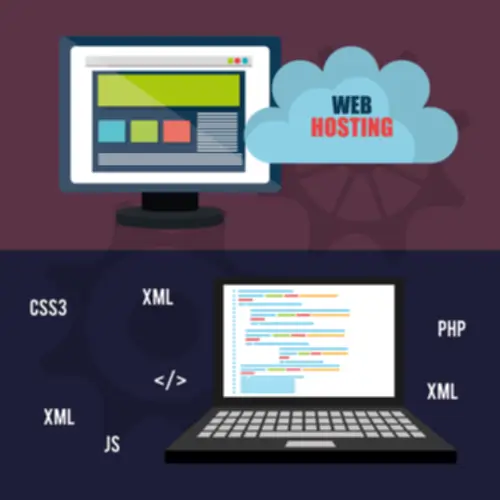What’s Containerization? Functions And Technologies
This self-sufficiency allows containers to run and perform consistently on pretty much any type of machine. Rather, by installing a container engine like Docker on the host OS, containers can share the OS amongst themselves in the same https://www.globalcloudteam.com/ computing system. This isolation helps with safety, too, as a end result of isolation makes it more durable for malware to maneuver between containers or from a container into the host system. Software Program running in containerized environments shares the machine’s OS kernel, and utility layers inside a container could be shared across containers.
A container creates an executable package deal of software program that is abstracted away from (not tied to or dependent upon) the host operating system. Therefore, it’s portable and able to run uniformly and constantly throughout any platform or cloud. Containers are often compared to virtual machines (VMs) because both applied sciences enable important compute efficiencies by allowing a number of types of software program (Linux- or Windows-based) to run in a single surroundings. Instead of copying the hardware layer, containerization removes the working system layer from the self-contained surroundings. This permits the appliance to run independently from the host operating system. Containerization prevents resource waste as a result of functions are supplied with the exact resources they want.
Containerized solutions have been gaining increasingly consideration in the IT sector in latest times as a tool that enables companies to step up the app development JavaScript process. As a vital component of the DevOps methodology, containerization benefits involve higher performance, flexibility, scalability and mobility for your business. Now, let’s have a look at high advantages of deploying software program on a container engine.
- Discover how IBM’s cutting-edge technologies can help you harness the power of information, streamline operations and gain a aggressive edge.
- Container orchestration is the automation of the deployment, administration, scaling, and networking of containers.
- Edge computing and IoT apps want to reply rapidly and run smoothly on units with limited energy and storage.
- In The Meantime, Britain’s Port of Felixstowe and Port of Rotterdam within the Netherlands emerged as major ports.
Every containerized software is isolated and operates independently of others. The failure of one container doesn’t affect the continued operation of some other containers. Improvement groups can establish and correct any technical points within one container without any downtime in other containers. Additionally, the container engine can leverage any OS safety isolation techniques—like SELinux entry control—to isolate faults inside containers. Extra moveable and resource-efficient than virtual machines (VMs), containers have turn out to be the de facto compute models of contemporary cloud-native functions. The topmost layer of the containerization architecture is the application code and the opposite files it needs to run, corresponding to library dependencies and associated containarization configuration files.
What Is Virtualization?

Certainly, a cloud-native utility would possibly encompass lots of of microservices, every in its own container. For the app to work, it has to orchestrate these containers and their respective microservices. The ability to isolate purposes in order that they will run in numerous contexts is a typical feature of containerization and virtualization.
Tools
This packaging ensures that the applying works the same method no matter the place it’s deployed, whether or not that’s an on-premises system or a cloud computing platform. Kubernetes is an open source container orchestration platform that helps manage distributed, containerized functions at large scale. You tell Kubernetes the place you want your software program to run, and the platform takes care of almost every little thing it takes to deploy and manage your containers. Serverless computing allows instant deployment of purposes because there are not any dependencies corresponding to libraries or configuration information involved.

What Are The Forms Of Container Technology?
Utilizing the utility model of cloud computing, organizations can flip up containers or scale them down to meet the present want without purchasing further capability once they don’t want it. Containers enable resiliency by working with the cloud in load-balancing efforts to absorb sudden rises in community traffic. When choosing the right container technology, contemplate your project necessities, target working system, software, and desired stage of isolation and effectivity. Think of containers as moveable “mini-environments” that assure your app works seamlessly, whether on your laptop or a cloud server.
The isolation of functions as containers inherently prevents the invasion of malicious code from affecting other containers or the host system. Moreover, safety permissions could be defined to mechanically block unwanted parts from entering containers or restrict communications with unnecessary sources. Containerization offers a number of benefits that have contributed to its widespread adoption in the IT business.
Since containers encapsulate the applying and its environment, they are often moved across completely different cloud and OS platforms simply, making them extremely moveable. Containers make sure that the application runs the same in each stage of the event cycle, which facilitates continuous integration and continuous deployment. Merely put, containerization allows developers to put in writing purposes once and run them everywhere.
With containerization, you create software program in a means that makes it more adaptable to completely different machines. Explore why software program professionals use containerization across industries, as properly as the benefits and disadvantages of using such software. Meet with a SentinelOne skilled to judge your cloud safety posture throughout multi-cloud environments, uncover cloud assets, misconfigurations, secret scanning, and prioritize risks with Verified Exploit Paths™.






















